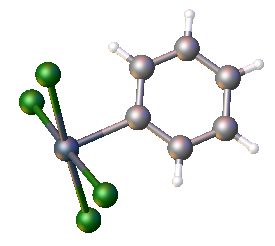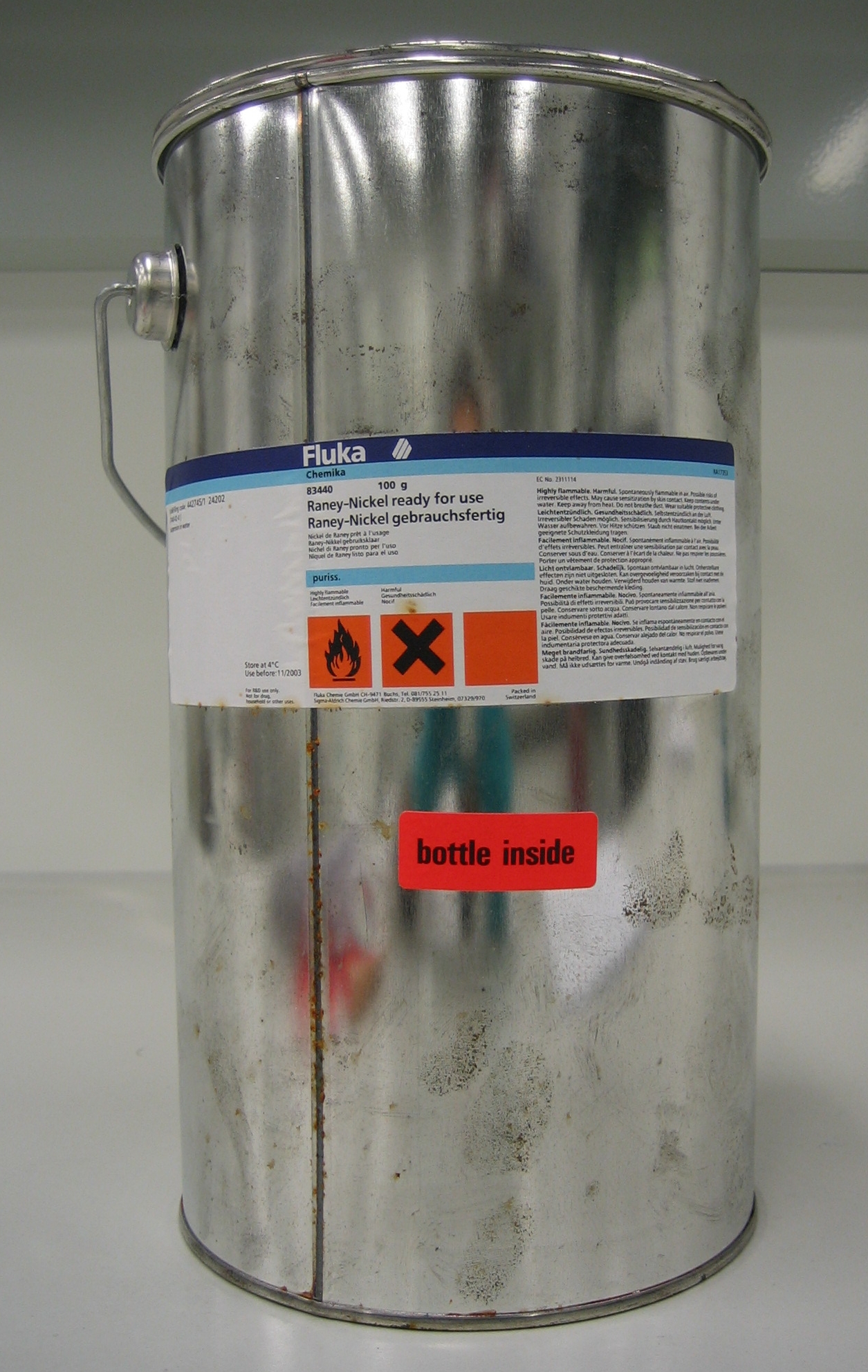|
Organotellurium Compound
Organotellurium chemistry describes the synthesis and properties of organotellurium compounds, chemical compounds containing a carbon-tellurium chemical bond. Organotellurium chemistry is a lightly studied area, in part because of it having few applications. Functional groups The tellurium analogues of common organosulfur and organoselenium functional groups are known. Tellurols are however unstable with respect to oxidation to the ditellurides. Commonly encountered organotellurium compounds are diorganomono- and ditellurides, R2Te and (RTe)2, respectively. Two other families of organotellurium(IV) compounds are well developed: R4−xTeClx and the telluroxides (R2TeO). Synthesis and reactions Reduced organotellurium compounds Reduced organotellurium compounds are commonly obtained from NaHTe and lithium telluride: :Li2Te + 2 RBr → R2Te + 2 LiBr A direct route to organolithium compounds starts from reactions of organolithium or Grignard reagents and Te: :Te + ArLi � ... [...More Info...] [...Related Items...] OR: [Wikipedia] [Google] [Baidu] |
Chemical Compound
A chemical compound is a chemical substance composed of many identical molecules (or molecular entities) containing atoms from more than one chemical element held together by chemical bonds. A molecule consisting of atoms of only one element is therefore not a compound. A compound can be transformed into a different substance by a chemical reaction, which may involve interactions with other substances. In this process, bonds between atoms may be broken or new bonds formed or both. There are four major types of compounds, distinguished by how the constituent atoms are bonded together. Molecular compounds are held together by covalent bonds; ionic compounds are held together by ionic bonds; intermetallic compounds are held together by metallic bonds; coordination complexes are held together by coordinate covalent bonds. Non-stoichiometric compounds form a disputed marginal case. A chemical formula specifies the number of atoms of each element in a compound molecule, usin ... [...More Info...] [...Related Items...] OR: [Wikipedia] [Google] [Baidu] |
Raney Nickel
Raney nickel , also called spongy nickel, is a fine-grained solid composed mostly of nickel derived from a nickel–aluminium alloy. Several grades are known, of which most are gray solids. Some are pyrophoric, but most are used as air-stable slurries. Raney nickel is used as a reagent and as a catalyst in organic chemistry. It was developed in 1926 by American engineer Murray Raney for the hydrogenation of vegetable oils. Raney Nickel is a registered trademark of W. R. Grace and Company. Other major producers are Evonik and Johnson Matthey. Preparation Alloy preparation The Ni–Al alloy is prepared by dissolving nickel in molten aluminium followed by cooling ("quenching"). Depending on the Ni:Al ratio, quenching produces a number of different phases. During the quenching procedure, small amounts of a third metal, such as zinc or chromium, are added to enhance the activity of the resulting catalyst. This third metal is called a "Promoter (catalysis), promoter". The promoter ... [...More Info...] [...Related Items...] OR: [Wikipedia] [Google] [Baidu] |
Metalorganic Vapour Phase Epitaxy
Metalorganic vapour-phase epitaxy (MOVPE), also known as organometallic vapour-phase epitaxy (OMVPE) or metalorganic chemical vapour deposition (MOCVD), is a chemical vapour deposition method used to produce single- or polycrystalline thin films. It is a process for growing crystalline layers to create complex semiconductor multilayer structures. In contrast to molecular-beam epitaxy (MBE), the growth of crystals is by chemical reaction and not physical deposition. This takes place not in vacuum, but from the gas phase at moderate pressures (10 to 760 Torr). As such, this technique is preferred for the formation of devices incorporating thermodynamically metastable alloys, and it has become a major process in the manufacture of optoelectronics, such as light-emitting diodes, its most widespread application. It was first demonstrated in 1967 at North American Aviation (later Rockwell International) Autonetics Division in Anaheim CA by Harold M. Manasevit. Basic principles ... [...More Info...] [...Related Items...] OR: [Wikipedia] [Google] [Baidu] |
Dimethyl Telluride
Dimethyl telluride is an organotelluride compound, formula ( CH3)2 Te, also known by the abbreviation DMTe. This was the first material used to grow epitaxial cadmium telluride and mercury cadmium telluride using metalorganic vapour phase epitaxy. Dimethyl telluride as a product of microbial metabolism was first discovered in 1939. It is produced by some fungi and bacteria ('' Penicillium brevicaule'', ''P. chrysogenum'', and '' P. notatum'' and the bacterium ''Pseudomonas fluorescens''). The toxicity of DMTe is unclear. It is produced by the body when tellurium or one of its compounds are ingested. It is noticeable by the garlic smelling breath it gives those exposed, similar to the effect of DMSO. Tellurium is known to be toxic Toxicity is the degree to which a chemical substance or a particular mixture of substances can damage an organism. Toxicity can refer to the effect on a whole organism, such as an animal, bacterium, or plant, as well as the effect on a subst ... [...More Info...] [...Related Items...] OR: [Wikipedia] [Google] [Baidu] |
Dimethylzinc
Dimethylzinc, also known as zinc methyl, DMZ, or DMZn, is a toxic organozinc compound with the chemical formula . It belongs to the large series of similar compounds such as diethylzinc. Preparation It is formed by the action of methyl iodide on zinc or zinc-sodium alloy at elevated temperatures. : Sodium assists the reaction of the zinc with the methyl iodide. Zinc iodide is formed as a byproduct. Properties Dimethylzinc is a colorless mobile volatile liquid, which has a characteristic disagreeable garlic-like odor. It is a very reactive and strong reducing agent. It is soluble in alkanes and often sold as a solution in hexanes. The triple point of dimethylzinc is ± 0.02 K. The monomeric molecule of dimethylzinc is linear at Zn center and tetragonal at C centers. Structure In the solid state the compound exists in two modifications. The tetragonal high-temperature phase shows a two-dimensional disorder, while the low-temperature phase which is monoclinic is ordered. The m ... [...More Info...] [...Related Items...] OR: [Wikipedia] [Google] [Baidu] |
Xenon Difluoride
Xenon is a chemical element; it has symbol Xe and atomic number 54. It is a dense, colorless, odorless noble gas found in Earth's atmosphere in trace amounts. Although generally unreactive, it can undergo a few chemical reactions such as the formation of xenon hexafluoroplatinate, the first noble gas compound to be synthesized. Xenon is used in flash lamps and arc lamps, and as a general anesthetic. The first excimer laser design used a xenon dimer molecule (Xe2) as the lasing medium, and the earliest laser designs used xenon flash lamps as pumps. Xenon is also used to search for hypothetical weakly interacting massive particles and as a propellant for ion thrusters in spacecraft. Naturally occurring xenon consists of seven stable isotopes and two long-lived radioactive isotopes. More than 40 unstable xenon isotopes undergo radioactive decay, and the isotope ratios of xenon are an important tool for studying the early history of the Solar System. Radioactive x ... [...More Info...] [...Related Items...] OR: [Wikipedia] [Google] [Baidu] |
Alkene
In organic chemistry, an alkene, or olefin, is a hydrocarbon containing a carbon–carbon double bond. The double bond may be internal or at the terminal position. Terminal alkenes are also known as Alpha-olefin, α-olefins. The International Union of Pure and Applied Chemistry (IUPAC) Preferred IUPAC name, recommends using the name "alkene" only for Open-chain compound, acyclic hydrocarbons with just one double bond; alkadiene, alkatriene, etc., or polyene for acyclic hydrocarbons with two or more double bonds; cycloalkene, cycloalkadiene, etc. for Cyclic compound, cyclic ones; and "olefin" for the general class – cyclic or acyclic, with one or more double bonds. Acyclic alkenes, with only one double bond and no other functional groups (also known as mono-enes) form a homologous series of hydrocarbons with the general formula with ''n'' being a >1 natural number (which is two hydrogens less than the corresponding alkane). When ''n'' is four or more, isomers are possible, ... [...More Info...] [...Related Items...] OR: [Wikipedia] [Google] [Baidu] |
Selenoxide Elimination
Selenoxide elimination (also called α-selenation) is a method for the chemical synthesis of alkenes from selenoxides. It is most commonly used to synthesize α,β-unsaturated carbonyl compounds from the corresponding saturated analogues. It is mechanistically related to the Cope reaction. Mechanism and stereochemistry After the development of sulfoxide elimination as an effective method for generating carbon–carbon double bonds, it was discovered that selenoxides undergo a similar process, albeit much more rapidly. Most selenoxides decompose to the corresponding alkenes at temperatures between −50 and 40 °C. Evidence suggests that the elimination is ''syn''; however, epimerization at both carbon and selenium (both of which are stereogenic) may occur during the reaction. As selenoxides can be readily prepared from nucleophilic carbonyl derivatives (enols and enolates), selenoxide elimination has grown into a general method for the preparation of α,β-unsaturated carbo ... [...More Info...] [...Related Items...] OR: [Wikipedia] [Google] [Baidu] |
Sigmatropic Rearrangement
In organic chemistry, a sigmatropic reaction () is a pericyclic reaction wherein the net result is one sigma bond (σ-bond) is changed to another σ-bond in an intramolecular reaction. In this type of rearrangement reaction, a substituent moves from one part of a Conjugated system, π-system to another part with simultaneous rearrangement of the π-system. True sigmatropic reactions are usually Catalysis, uncatalyzed, although Lewis acid catalysis is possible. Sigmatropic reactions often have Transition metal catalyst, transition-metal catalysts that form Reaction intermediate, intermediates in analogous reactions. The most well-known of the sigmatropic rearrangements are the [3,3] Cope rearrangement, Claisen rearrangement, Carroll rearrangement, and the Fischer indole synthesis. Overview of sigmatropic shifts Woodward–Hoffman sigmatropic shift nomenclature Sigmatropic rearrangements are concisely described by an order term [i,j], which is defined as the Wiktionary:migration, mi ... [...More Info...] [...Related Items...] OR: [Wikipedia] [Google] [Baidu] |
Selenoxide Oxidation
Organoselenium chemistry is the science exploring the properties and reactivity of organoselenium compounds, chemical compounds containing carbon-to-selenium chemical bonds. Selenium belongs with oxygen and sulfur to the group 16 elements or chalcogens, and similarities in chemistry are to be expected. Organoselenium compounds are found at trace levels in ambient waters, soils and sediments. Selenium can exist with oxidation state −2, +2, +4, +6. Se(II) is the dominant form in organoselenium chemistry. Down the group 16 column, the bond strength becomes increasingly weaker (234 kJ/ mol for the bond and 272 kJ/mol for the bond) and the bond lengths longer ( 198 pm, 181 pm and 141 pm). Selenium compounds are more nucleophilic than the corresponding sulfur compounds and also more acidic. The p''K''a values of are 16 for oxygen, 7 for sulfur and 3.8 for selenium. In contrast to sulfoxides, the corresponding selenoxides are unstable in the presence of β-protons and this propert ... [...More Info...] [...Related Items...] OR: [Wikipedia] [Google] [Baidu] |
Sulfoxide
In organic chemistry, a sulfoxide, also called a sulphoxide, is an organosulfur compound containing a sulfinyl () functional group attached to two carbon atoms. It is a polar functional group. Sulfoxides are oxidized derivatives of sulfides. Examples of important sulfoxides are alliin, a precursor to the compound that gives freshly crushed garlic its aroma, and dimethyl sulfoxide (DMSO), a common solvent. Structure and bonding Sulfoxides feature relatively short S–O distances. In DMSO, the S–O distance is 1.531 Å. The sulfur center is pyramidal; the sum of the angles at sulfur is about 306°.. Sulfoxides are generally represented with the structural formula R−S(=O)−R', where R and R' are organic groups. The bond between the sulfur and oxygen atoms is intermediate of a dative bond and a polarized double bond. The double-bond resonance form implies 10 electrons around sulfur (10-S-3 in N-X-L notation). The double-bond character of the S−O bond may be accou ... [...More Info...] [...Related Items...] OR: [Wikipedia] [Google] [Baidu] |





